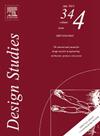设计教育太重要了,不能把它留给设计师
IF 3.2
1区 工程技术
Q2 ENGINEERING, MANUFACTURING
引用次数: 0
摘要
设计可以成为变革的强大力量。然而,工业设计行业及其教育体系在摆脱几十年来关注物多于人的旧模式方面进展缓慢。今天的设计教育所涵盖的主题与50多年前的教育太过相似。这种停滞尤其令人惊讶,因为这个行业的声誉和价值是建立在为公司或组织提供服务的创新能力上的,许多设计师声称他们采取以人为本的工作方法。近年来,激发创造性思维的兴趣浪潮将设计降格为一种脚本化的方法,这种方法在一定程度上抑制了创造性思维。它颂扬过程而不是知识。鉴于目前的实践,在医疗保健、人类行为或可持续性等主题上,不太可能完全实现包容性或基于设计的创新。设计师教育的核心应该包括心理学、生理学、生物力学、社会责任和其他以人为本的主题。课程还应包括研究方法和统计学课程,这是在数据驱动的世界中理解人的关键组成部分。重新定义的课程可以重新定义这个职业。目前尚不清楚该行业或其教育体系是否会在短期内发生重大变化。如果不把关于人的知识放在核心位置,设计将继续由设计专业之外的专业人士来决定。对于难以改变的遗留问题,解决方案可以是创建一个全新的设计学科,一个以人为中心的学科。本文章由计算机程序翻译,如有差异,请以英文原文为准。

Design education is too important to be left to designers
Design can be a powerful force for change. The industrial design profession and its education system however have been slow to escape a decades old model that focuses on things more than people. Topics covered in design education today are far too much like those taught 50 or more years ago. The stagnancy is especially surprising because the profession bases its reputation and worth on its ability to innovate for the companies or organizations enlisting their services, with many designers claiming they take a human-centered approach to their work.
The wave of interest in recent years to spur creative thinking has relegated design to a scripted methodology that to an extent has suppressed creative thinking. It celebrates process rather than knowledge.
Given current practice it is unlikely that inclusivity, or design-based innovations in topics such as healthcare, human behavior or sustainability, will be fully realized. At its core a designer's education should include psychology, physiology, biomechanics, social responsibility and other human-centered topics. Curriculums should also include courses in research methods and statistics, critical components to understanding people in a data-driven world. Redefined curriculums can redefine the profession.
It's not clear that the profession or its education system will transform significantly anytime soon. Without placing knowledge about people at its core design will continue to be determined by professionals outside of the design profession. With a legacy that can be difficult to shift, the solution can be the creation of an entirely new discipline in design, one that's centered on people.
求助全文
通过发布文献求助,成功后即可免费获取论文全文。
去求助
来源期刊

Design Studies
工程技术-工程:制造
CiteScore
8.60
自引率
20.00%
发文量
41
审稿时长
40 days
期刊介绍:
Design Studies is a leading international academic journal focused on developing understanding of design processes. It studies design activity across all domains of application, including engineering and product design, architectural and urban design, computer artefacts and systems design. It therefore provides an interdisciplinary forum for the analysis, development and discussion of fundamental aspects of design activity, from cognition and methodology to values and philosophy.
Design Studies publishes work that is concerned with the process of designing, and is relevant to a broad audience of researchers, teachers and practitioners. We welcome original, scientific and scholarly research papers reporting studies concerned with the process of designing in all its many fields, or furthering the development and application of new knowledge relating to design process. Papers should be written to be intelligible and pertinent to a wide range of readership across different design domains. To be relevant for this journal, a paper has to offer something that gives new insight into or knowledge about the design process, or assists new development of the processes of designing.
 求助内容:
求助内容: 应助结果提醒方式:
应助结果提醒方式:


